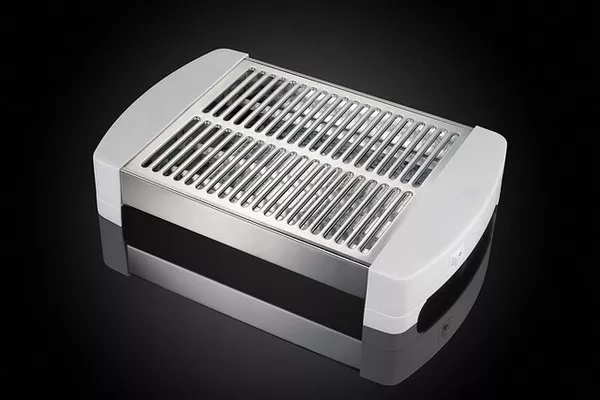The refrigeration system is a marvel of modern technology that plays a crucial role in our daily lives. From keeping our food fresh to providing comfort during scorching summers, refrigeration systems have become an essential part of modern living. But have you ever wondered how these systems work to keep things cool? In this article, we will take a closer look at the science behind refrigeration and how this cooling technology functions.
The Basic Principles of Refrigeration
At its core, the refrigeration system works on the principle of removing heat from an enclosed space, resulting in cooling. It accomplishes this through a continuous cycle of compression, condensation, expansion, and evaporation. The key components of a refrigeration system are the compressor, condenser, expansion valve, and evaporator, each contributing to the cooling process.
The Components of a Refrigeration System
a. Compressor:
The compressor is the heart of the refrigeration system. It functions by compressing a refrigerant gas, increasing its pressure and temperature. The compressed gas is then ready for the next stage of the cooling cycle.
b. Condenser:
After leaving the compressor, the hot and high-pressure refrigerant gas enters the condenser. The condenser’s primary function is to dissipate the heat from the refrigerant, causing it to condense into a high-pressure liquid. The condenser is usually equipped with fins or coils to enhance heat transfer and aid in cooling.
c. Expansion Valve:
Once the refrigerant exits the condenser as a high-pressure liquid, it enters the expansion valve. This valve reduces the pressure of the liquid refrigerant, causing it to expand rapidly. The sudden expansion leads to a drop in temperature, converting the liquid into a cold, low-pressure mixture of liquid and vapor.
d. Evaporator:
The cold refrigerant mixture then enters the evaporator, which is typically located inside the area to be cooled, such as a refrigerator or air conditioning unit. As warm air from the enclosed space comes into contact with the cold evaporator coils, heat is transferred from the air to the refrigerant. This process causes the refrigerant to evaporate into a low-pressure vapor, absorbing heat from the surrounding air and cooling the space.
The Refrigeration Cycle
The refrigeration cycle is a continuous process that repeats to maintain the desired cooling effect. Let’s walk through the cycle step by step:
Compression: The refrigeration cycle begins with the compressor compressing the low-pressure, low-temperature refrigerant vapor into a high-pressure, high-temperature gas.
Condensation: The hot refrigerant gas travels to the condenser, where it releases heat to the surrounding environment, causing it to condense into a high-pressure liquid.
Expansion: The high-pressure liquid refrigerant moves through the expansion valve, where its pressure drops rapidly, resulting in a cold, low-pressure mixture of liquid and vapor.
Evaporation: The cold refrigerant mixture enters the evaporator, where it absorbs heat from the surrounding air, causing the refrigerant to evaporate back into a low-pressure vapor.
Return to Compression: The low-pressure vapor then returns to the compressor to begin the cycle again, continuing to remove heat from the enclosed space and maintain the desired cooling effect.
Types of Refrigerants
The refrigerant is a crucial component of the refrigeration system as it undergoes phase changes to absorb and release heat during the cooling cycle. Over the years, different types of refrigerants have been used, each with its own advantages and disadvantages.
a. Chlorofluorocarbons (CFCs): CFCs were commonly used as refrigerants in the past, but their use has been phased out due to their harmful impact on the ozone layer, contributing to ozone depletion.
b. Hydrochlorofluorocarbons (HCFCs): HCFCs, such as R-22, were introduced as a transitional replacement for CFCs. While they have a lower impact on the ozone layer, they still contribute to ozone depletion, and their use is also being phased out.
c. Hydrofluorocarbons (HFCs): HFCs, like R-134a and R-410A, have become the most widely used refrigerants in modern refrigeration systems. They do not deplete the ozone layer, but they have a high global warming potential (GWP), contributing to climate change concerns.
d. Hydrocarbons (HCs): Hydrocarbons, such as propane (R-290) and isobutane (R-600a), are natural refrigerants with low GWP and ozone depletion potential. They are gaining popularity as eco-friendly alternatives in some refrigeration systems.
Efficiency and Energy Consumption
The efficiency of a refrigeration system plays a vital role in its performance and energy consumption. Factors such as the design, size, insulation, and choice of refrigerant all influence the system’s efficiency.
Regular maintenance, including cleaning coils, checking for refrigerant leaks, and ensuring proper insulation, is essential to maintain the system’s efficiency and reduce energy consumption. Energy-efficient compressors and components can also significantly contribute to lowering energy usage.
Applications of Refrigeration Systems
Refrigeration systems find a multitude of applications in various industries and everyday life. Some common applications include:
a. Domestic Refrigeration: Household refrigerators and freezers keep our food fresh and safe for consumption.
b. Commercial Refrigeration: Refrigeration systems are used in grocery stores, restaurants, and convenience stores to preserve perishable food items.
c. Air Conditioning: Air conditioning systems use refrigeration principles to cool and dehumidify indoor spaces, providing comfort during hot weather.
d. Industrial Refrigeration: Large-scale refrigeration systems are used in industries such as food processing, pharmaceuticals, and chemical manufacturing to preserve and store products.
e. Transport Refrigeration: Refrigeration systems are employed in refrigerated trucks and containers to transport perishable goods over long distances.
Conclusion
The refrigeration system is a remarkable feat of engineering that has revolutionized modern life. By utilizing the principles of compression, condensation, expansion, and evaporation, these systems efficiently remove heat from enclosed spaces, providing us with the comfort of cool air and preserving our perishable items.
As the world continues to prioritize sustainability and energy efficiency, the choice of refrigerants and advancements in cooling technology play a vital role in reducing the environmental impact of refrigeration systems. By adopting eco-friendly refrigerants and improving system efficiency, we can continue to enjoy the benefits of refrigeration while safeguarding the environment for future generations.

